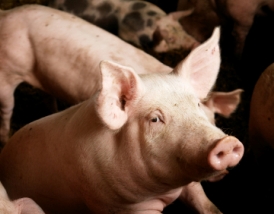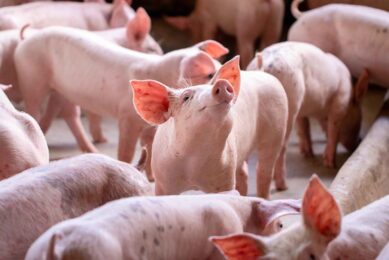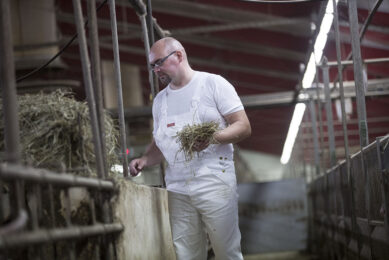Pathology and pathogens associated with PRDC in pigs

A Danish research team investigated the pathology and pathogens associated with Porcine Respiratory Disease Complex in Denmark.
Respiratory infections are among the most important diseases of growing pigs. In order to elucidate the multifactorial aetiology of porcine respiratory disease complex (PRDC) in Denmark, lungs from 148 finishing pigs with cranioventral bronchopneumonia (case group) and 60 pigs without lung lesions (control group) were collected from abattoirs.
The pathogens involved in PRDC and their interactions were identified and linked to the histopathological diagnosis. The lung samples were cultured for bacteria and tested by multiplex polymerase chain reaction for presence of swine influenza virus (type A), porcine reproductive and respiratory syndrome virus (both European and US type), porcine circovirus type 2 (PCV2), porcine respiratory coronavirus, porcine cytomegalovirus, Mycoplasma hyopneumoniae and Mycoplasma hyorhinis.
All cases had cranioventral lobular bronchopneumonia consistent with PRDC. There was a broad range of microscopical lesions and the cases were characterized as acute (n=10), subacute (n=24) or chronic (n=114) bronchopneumonia. Five bacterial species, five viruses and two Mycoplasma spp. were detected in different combinations. PCV2, M. hyopneumoniae, M. hyorhinis and Pasteurella multocida were detected most frequently among the PRDC affected swine and the diversity and number of pathogens were higher in these animals compared with controls.
No clear-cut associations were detected between pathogens and histological lesions or histopathological diagnoses. PRDC occurs more frequently than enzootic pneumonia among Danish finishing pigs and has complex and varied histopathology.
This research was published in J Comp Pathol. 2010 Feb 22, by Hansen MS, Pors SE, Jensen HE, Bille-Hansen V, Bisgaard M, Flachs EM, Nielsen OL. Department of Veterinary Disease Biology, Faculty of Life Sciences (LIFE), University of Copenhagen, Denmark; Department of Veterinary Diagnostics and Research, The National Veterinary Institute, Technical University of Denmark, Copenhagen V, Denmark.











